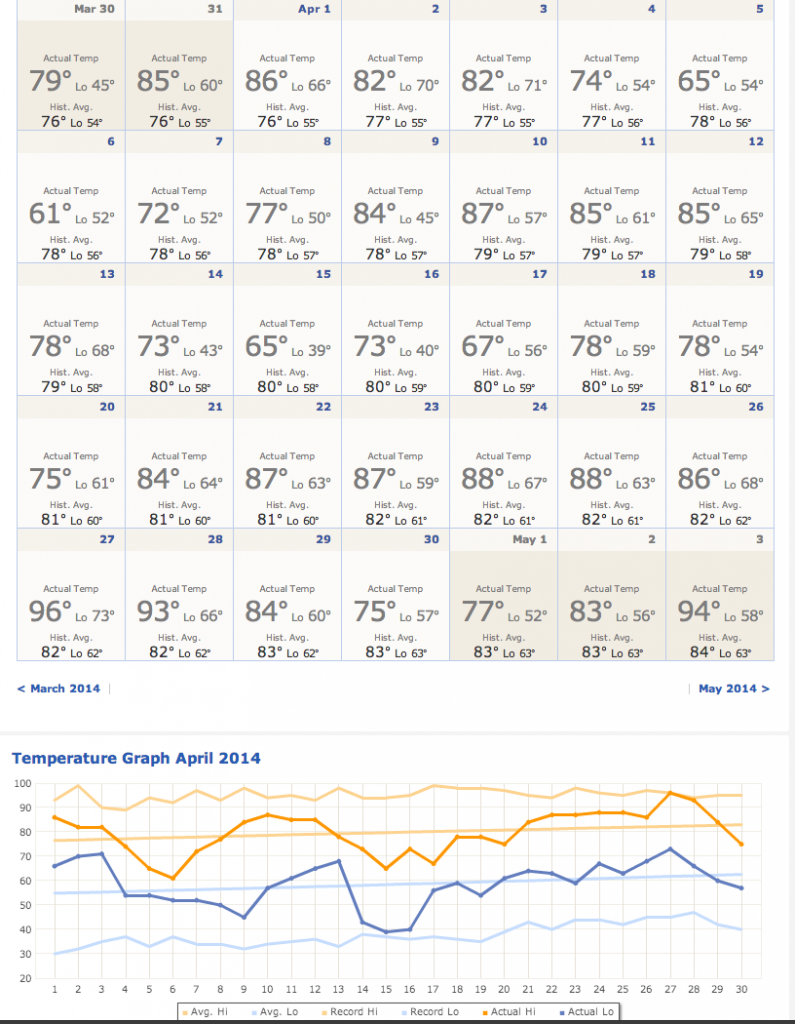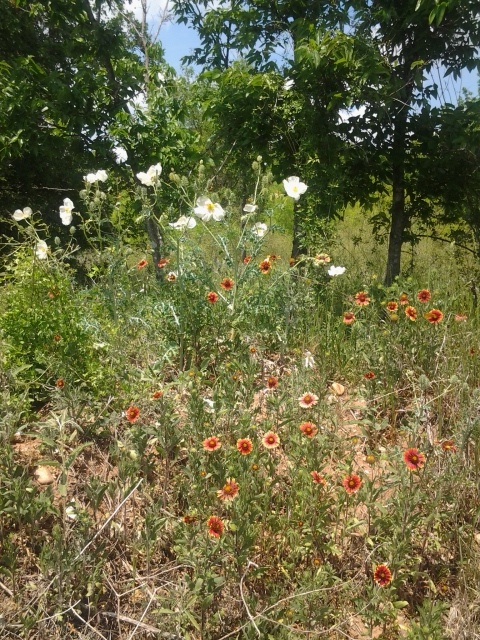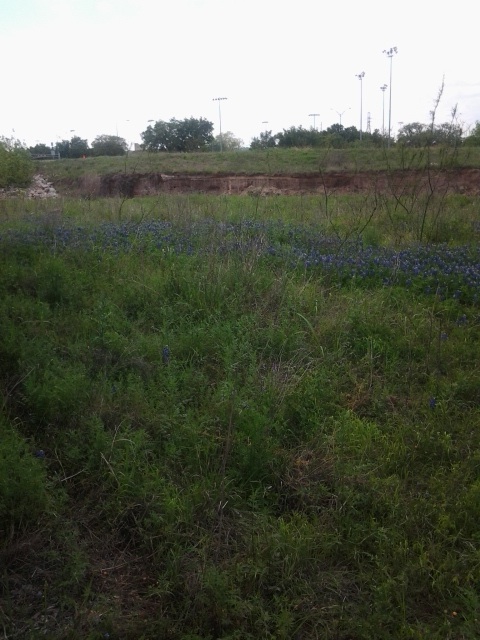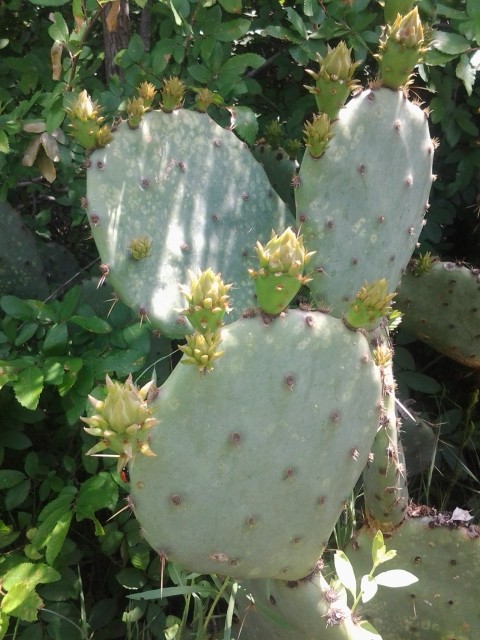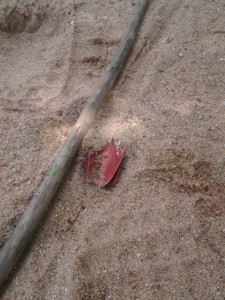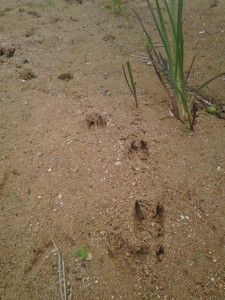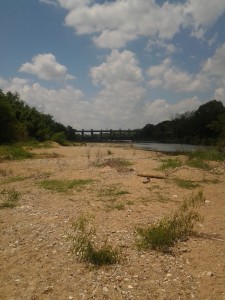April and early May continued to change the surroundings at Roy G. Guerrero Park. Temperatures heated up quite a bit, which led me to shift my ventures to the park to earlier mornings, as opposed to my initial sunset hikes. I continued to photograph at the park with the Hasselblad during my hikes, which meant that I often forgot to check the temperatures. I wanted to get a better picture of how the weather was during the month of April, so I did some googling and found this cool website called AccuWeather, where users can look up temperature data for a whole calendar month. I was even able to find data for the last several months.
In general, temperatures were far warmer this month, with most highs in the 70’s and 80’s, with a few days of highs in the 60s. Compared to January and February, which saw spikes in highs in the 60s and even 70’s and highs in the 30’s and 40’s. We can assume that much of this is due in part to the strange pattern of arctic blasts we saw this first part of this year.
As temperatures heated up, I was surprised to see an increase in greenery. While March brought the beginnings of our beloved Texas wild flowers, April only served to increase the number and variety of wild flowers at the park, including larger patches of bluebonnets, more firewheels, and even more buttercups. I even saw the beginnings of some cactus blooms.
A grove of trees that I often passed through became overgrown over the course of the month, with a ton of grass and new foliage. In general there was far more greenery and foliage throughout the park than I had previously expected this late in the spring and beginnings of the summer. Since I moved my hikes to the mornings, I was able to spot a different trend in bird activity. I saw far less cardinals this month, but a great deal of swallows feeding on small fruits from the few mulberry trees. Most of the swallows I saw were closer to the river.

The grove of trees I often pass in the first part of my hike saw a great increase in grass growth and amount of foliage.
While my earlier walks around the park had taken me further in to the interior of the parklands, this month I went way off the beaten path to discover a lower part of the Colorado River I had not yet seen in my years of living in Austin. Near the park resides the Longhorn Dam, which separates Town Lake/Lady Bird Lake from the parts of the Lower Colorado River. In this image, you can see the sandy beach famously known as Secret Beach, where many people go for rest and recreation and to see a different side of the river. The river was flowing peacefully down stream, and nearby I even noticed a couple of young women tanning on the sand. In some of the more still pools that were slightly cut off from the main part of the river, I saw quite a bit of algae patches. In the sand were hundreds of tiny muscle shells, and even the skeletons of some crawdads. As I continued to explore the beach, I found a track of hoof prints, which suggested that deer from the park had been coming down to the shores of the beach to drink from the river. On the water, I observed many ducks coming and going, along with at least one crane or heron hanging out closer to the banks on the opposite side of the river, where there were more trees and reeds. Below are pictures of some of my findings, as well and an image of the path I took to the beach and the dam off in the distance.
The blue dots on the map show my previous path that I usually took while walking through the park. The red dots show the new path I took to get to Secret Beach during my visits for my observations during April and early May.
I also went by the part of the trail where I took panoramic pictures in February and March, to get a comparison of how the flora changed in that area of the park these last couple of months. In February, there was less greenery, and the grass and the trees were generally looking dry. In March, a great improvement was seen in the amount of greenery. April only served to further improve the amount of greenery I saw along the path.
Probably the most important thing about this blog is that we are keeping a record of what is happening in our local surroundings. Not just for our class, but for future residents of Austin. Our city is changing, which will mean that our parks and green spaces and lakes will be changing along with it. I think Aldo Leopold shared a similar sentiment on page 162 of A Sand County Almanac:
Some day my marsh, dyked and pumped, will lie forgotten, under the wheat, just as today and yesterday will lie forgotten under the years. Before the last mud-minnow makes his last wiggle in the last pool, the terns will scream goodbye to the Clandenboye, the swans will circle skyward in snowy dignity, and the cranes will blow their trumpets in farewell.
Time has flown by this semester at the Roy G. Guerrero Park. I felt so privileged to have witnessed how this park has changed over the course of merely four months. I saw a great variety of wildlife during the course of my blogging, and the more time I spent at the park, the more curious I became about my surroundings. As these months have gone on, I have felt a reconnection to my own land ethic that I have cultivated over the course of my lifetime. I felt an undeniable pull to this park, and found myself wanting to explore it further each time I visited. I even based a photography project on the area, and this was the park that gave me inspiration to work on my semester research project about litter in water features in our local parks.
All in all, I am thankful for my time here. Roy G. Guerrero Park has become my escape from the hustle and bustle of daily life. More than anything, my time here gave me the opportunity I needed and yearned for to reconnect with my surroundings and begin to be mindful and fully aware of the simplicity implicit in nature. I intended to continue visiting the park frequently, and further commune with the land. With that, I blow my trumpet in a farewell.
Maria D. Minor
ENSP 2324.02, Spring 2014
Dr. Michael Wasserman
